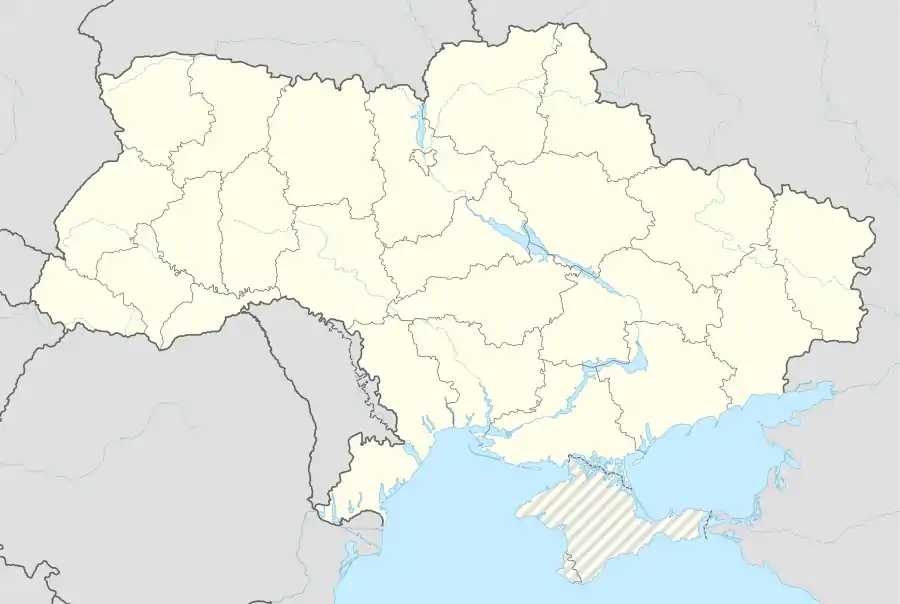Scythian Neapolis
Scythian Neapolis (Greek: Σκυθική Νεάπολις) was a settlement that existed from the end of the 3rd century BC until the second half of the 3rd century AD. Anciently, it was considered a town of the Tauric Chersonesus (Crimea). The archeological ruins sit on the outskirts of the present-day Simferopol. This city was the center of the Crimean Scythian tribes, led by Skilurus and Palacus (who were probably buried at the local mausoleum). The town ruled over a small kingdom, covering the lands between the lower Dnieper river and Crimea. In the 3rd and 2nd centuries BC, it was a city "with a mixed Scythian-Greek population, strong defensive walls and large public buildings constructed using the orders of Greek architecture".[1] Neapolis was destroyed halfway through the 3rd century AD by the Goths.
Σκυθική Νεάπολις (in Greek) | |
_(29608182661).jpg.webp) The supposed tomb of Skilurus | |
.svg.png.webp) Shown within Crimea  Scythian Neapolis (Ukraine)  Scythian Neapolis (Europe) | |
| Location | Simferopol, Crimea |
|---|---|
| Region | Taurica |
| Coordinates | 44°56′34″N 34°07′14″E |
| Type | Settlement |
| History | |
| Founded | 3rd century BC |
| Abandoned | 3rd century AD |
| Cultures | Greek, Scythian |
| Site notes | |
| Website | Historical and archaeological preserve of Scythian Neapolis |
References
- North Pontic Archaeology, ed. by Gocha R. Tsetskhladze. Brill Academic Publishers, 2001. ISBN 90-04-12041-6. Page 167.
![]() This article incorporates text from a publication now in the public domain: Smith, William, ed. (1854–1857). "Neapolis". Dictionary of Greek and Roman Geography. London: John Murray.
This article incorporates text from a publication now in the public domain: Smith, William, ed. (1854–1857). "Neapolis". Dictionary of Greek and Roman Geography. London: John Murray.

